Skin Resurfacing Explained: Out with the Old, In with the New
Why Skin Resurfacing is the Key to Renewed Confidence
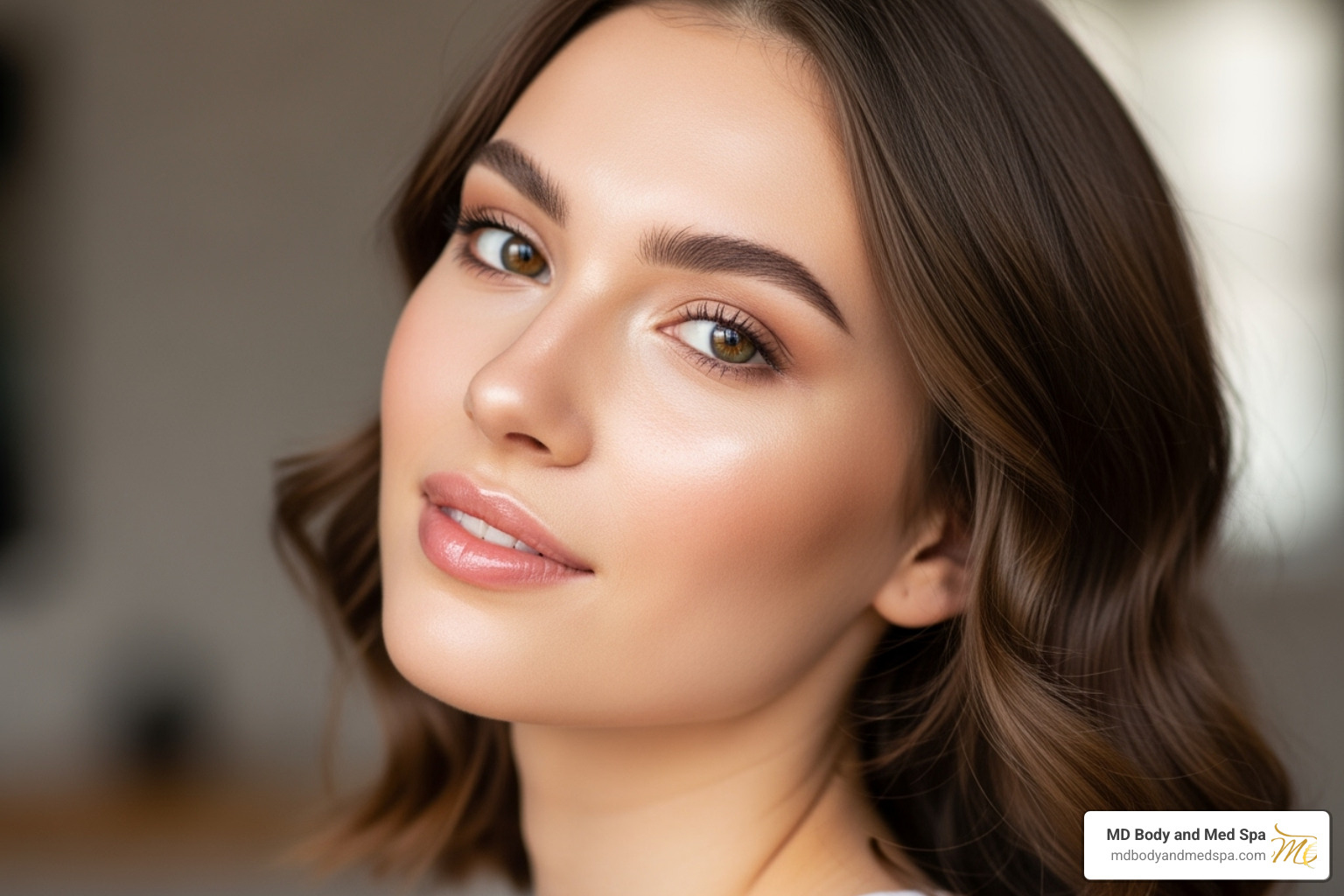
Skin resurfacing is a cosmetic procedure that removes damaged outer layers of skin to reveal a healthier, more youthful appearance. By creating a controlled injury to the skin, these treatments trigger the body's natural healing response, stimulating collagen production and cellular turnover.
This process effectively treats a range of concerns, including wrinkles, scars, sun damage, uneven texture, and pigmentation issues. Common methods include laser treatments, chemical peels, and microneedling, with recovery times varying from minimal downtime to a few weeks depending on the treatment's intensity. The result is smoother, firmer, more even-toned skin that can last for years.
The procedure targets both the epidermis (outer layer) and dermis (deeper layer) to remove damaged tissue and promote new collagen formation. Whether you have fine lines, acne scars, or sun spots, skin resurfacing offers a path to clearer, more radiant skin by matching the right treatment to your specific concerns.
I'm Rachel Stone, a Medical Aesthetics specialist and Certified Laser Technician with over a decade of experience. My advanced training in laser technologies and chemical peels allows me to help clients achieve their goals with personalized skin resurfacing solutions.
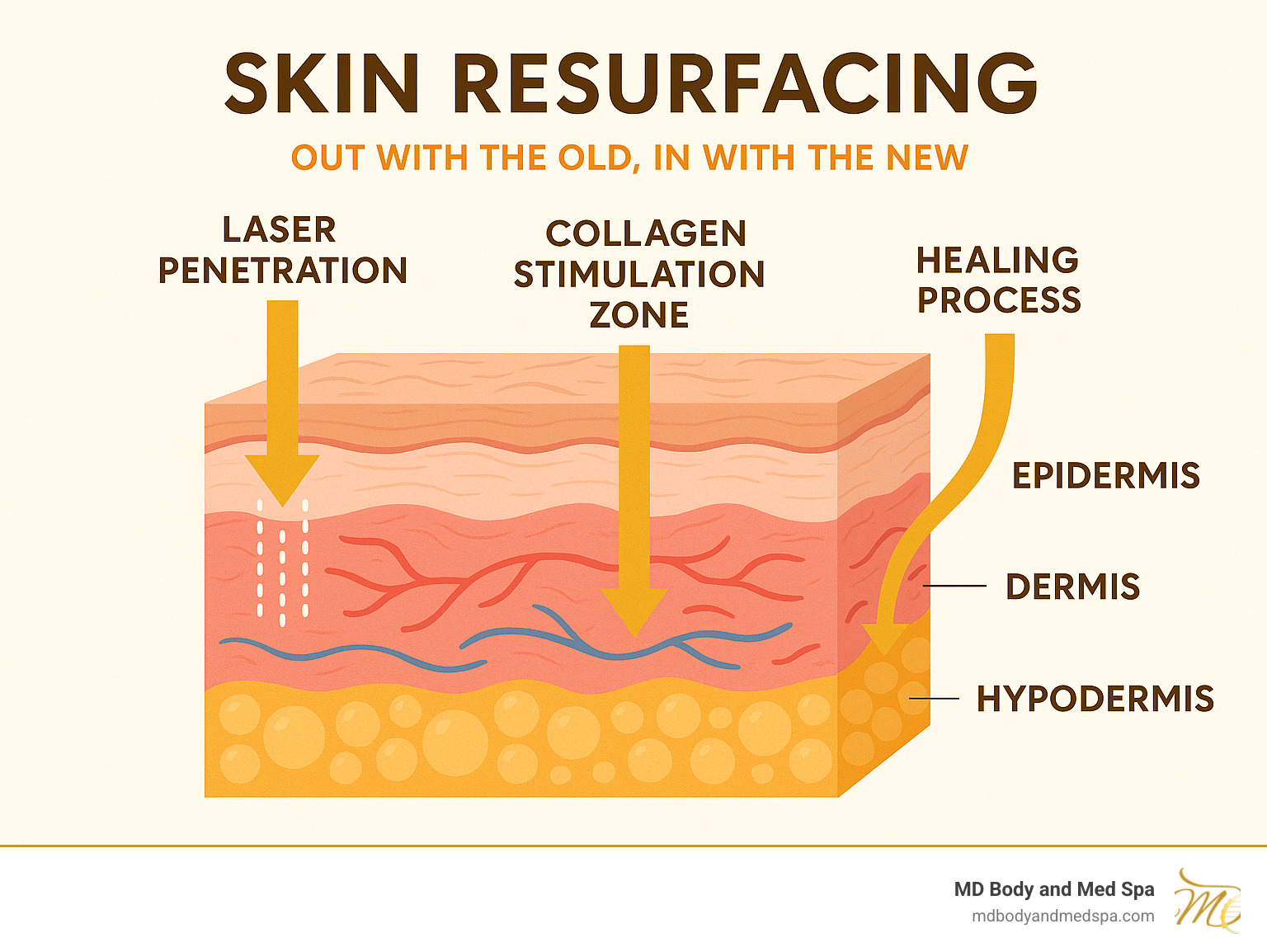
What is Skin Resurfacing and How Does It Work?
Skin resurfacing gives your skin a fresh start. The process works by creating a controlled injury that triggers your body's natural healing response. This accelerates cellular turnover, replacing old, damaged cells with fresh, healthy ones.
This powerful approach can tackle a wide range of concerns, from wrinkles and scars to sun damage, uneven texture, and pigmentation issues. It's a sophisticated way to restore your skin's original beauty and vibrancy.
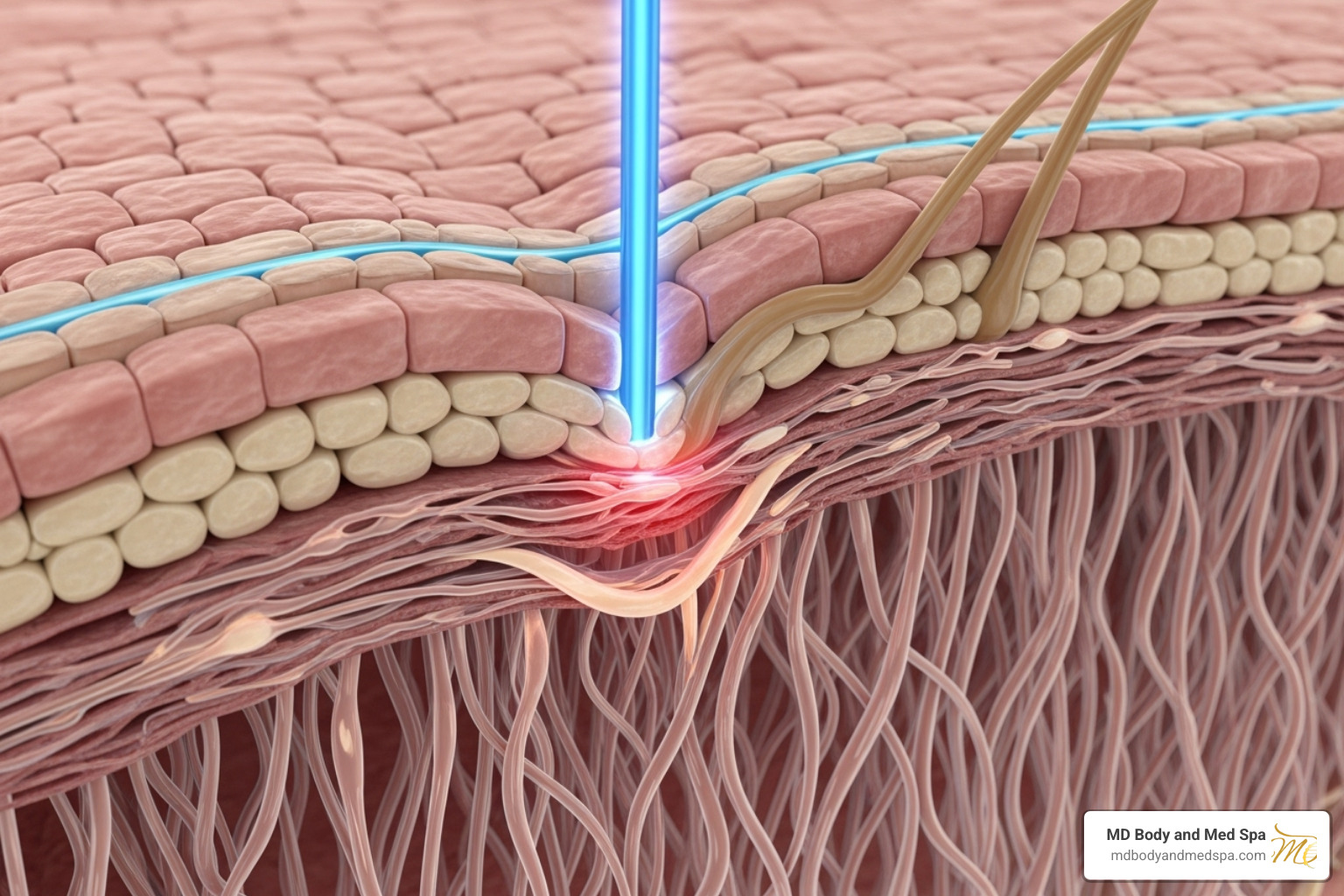
The Science Behind Skin Renewal
Your skin has two main layers: the epidermis (outer layer) and the dermis (inner layer), which contains vital proteins like collagen and elastin fibers. Over time, sun exposure and aging break down these components, leading to wrinkles and sagging.
Skin resurfacing treatments work by removing damaged epidermal layers, heating the deeper dermis, or both. This process activates cells called fibroblasts, which produce new collagen and elastin in a process called neocollagenesis. The result is tighter, smoother skin that looks and feels younger, all thanks to a boost to your body's natural renewal system.
For those interested in the latest scientific developments, this scientific review of resurfacing procedures offers more detail.
Common Skin Concerns Addressed
Skin resurfacing is incredibly versatile and can address numerous issues at their source. It is effective for:
- Fine lines and wrinkles, especially around the eyes and mouth
- Acne scars and surgical scars
- Sun spots and age spots
- Uneven skin tone and dullness
- Enlarged pores and rough texture
- Certain types of warts
- Mild skin laxity
By treating these problems at a cellular level, you invest in genuine, long-lasting improvement. For more information on achieving an even complexion, see our guide on skin tone correction.
Exploring the Types of Skin Resurfacing Treatments
When it comes to skin resurfacing, you have several effective options, including laser resurfacing, chemical peels, dermabrasion, and microneedling. Each treatment has unique strengths, working at different depths with varying levels of intensity and recovery time. Some offer a gentle refresh, while others provide more dramatic results that require a longer healing period.
At MD Body and Med Spa, we help you steer these choices to find the perfect match for your skin goals. For a comprehensive look at our laser options, you can explore our More info about Laser Treatments.
Ablative vs. Non-Ablative: Understanding the Key Differences
Laser treatments fall into two main categories: ablative and non-ablative.
Ablative treatments remove the outer layer of skin (epidermis), allowing fresh, healthy skin to emerge. Procedures like the CO2 laser and some Erbium laser treatments deliver more dramatic results but require more recovery time.
Non-ablative treatments take a gentler approach, heating the deeper skin layers without removing the surface. This stimulates collagen production from within, leading to gradual improvements with minimal downtime. Intense Pulsed Light (IPL) is a common example.
Fractional lasers are a breakthrough that treats the skin in a grid of tiny, precise columns, leaving healthy tissue in between to speed up healing and reduce side effects.
| Metric | Ablative Treatments | Non-Ablative Treatments |
|---|---|---|
| Mechanism | Vaporizes outer skin layer (epidermis) and heats underlying dermis. | Heats underlying skin (dermis) without removing outer layer. |
| Intensity | More aggressive, deeper penetration. | Less aggressive, gentler. |
| Downtime | Longer (1-2 weeks or more). | Shorter (minimal to a few days). |
| Results | More dramatic, often achieved in fewer sessions. | More subtle, gradual improvement. |
| Number of Sessions | Often 1, sometimes 2-3 for deep concerns. | Typically 2-4 or more, spaced weeks/months apart. |
| Best For | Deep wrinkles, significant sun damage, severe acne scars. | Fine lines, mild sun damage, uneven texture, pigmentation. |
The choice depends on your concerns and available downtime. To learn more about fractional technology, explore our insights on More info about Fractional Laser Skin Rejuvenation.
A Closer Look at Laser Technologies
Two powerhouse lasers in skin resurfacing are the Carbon Dioxide (CO2) laser and the Erbium (Er:YAG) laser.
The CO2 laser is the gold standard for deep resurfacing. It precisely vaporizes damaged skin, making it highly effective for severe wrinkles, sun damage, and deep acne scars. The results are transformative but require a longer recovery.
The Erbium laser is a gentler alternative that removes tissue with less heat damage to surrounding areas. This means less swelling and a faster recovery, making it excellent for fine lines and mild to moderate sun damage. It is often a safer choice for darker skin tones due to a lower risk of pigmentation changes.
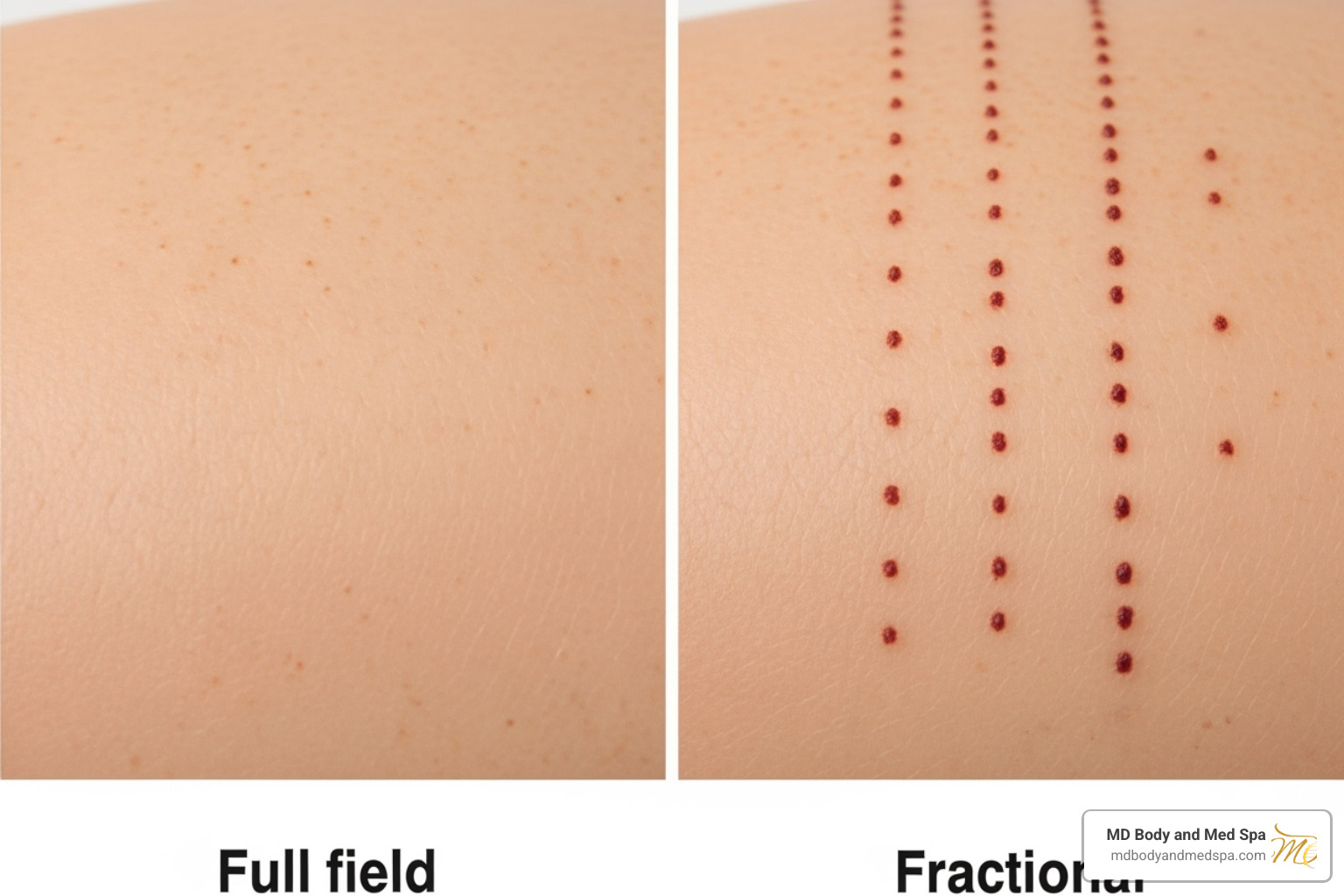
The fractional approach, used with both CO2 and Erbium lasers, has been a game-changer. It creates thousands of micro-injuries while leaving surrounding tissue untouched, which allows for rapid healing. Micro-ablative fractional lasers offer good results with manageable downtime over multiple sessions. Deep fractionated lasers penetrate further, achieving better results in a single session but with a 7-14 day recovery. This precision targeting makes laser resurfacing more accessible and comfortable.
The Treatment Journey: From Consultation to Recovery
Your skin resurfacing journey is a guided process from start to finish. We prioritize clear communication about before and after expectations, procedure steps, the healing timeline, and the importance of post-care to ensure you have a comfortable and rewarding experience.
For more insights into our advanced treatments, explore our page on More info about Advanced Skincare Treatments.
The Consultation and How to Prepare
Your consultation begins with a review of your medical history and a thorough skin assessment. We'll discuss your specific goals and use tools like the Fitzpatrick scale to evaluate your skin type, ensuring a safe and effective treatment plan. It is vital to share your complete medical history, including any history of cold sores or fever blisters, as we may prescribe antiviral medication to prevent flare-ups.
To prepare for your treatment:
- Avoid sun exposure and tanning for at least four weeks prior.
- Stop certain medications like aspirin, ibuprofen, or vitamin E for about 10 days beforehand.
- Stop smoking for at least two weeks before and after your procedure, as it impairs healing.
- Arrange for transport home if you will be receiving sedation.
For more on our approach, visit our page on More info about Facial Rejuvenation.
During the Procedure: What to Expect
Skin resurfacing is an outpatient procedure performed in our office. Your comfort is our priority, so we offer anesthesia options ranging from a topical numbing cream for gentler treatments to local anesthetic injections and oral medication for more intensive procedures.
The procedure duration depends on the treatment area, typically 30-45 minutes for a partial face treatment and 1.5-2 hours for a full face. Sensations are minimal with proper numbing, often described as a warm, tingling feeling.
The Healing Process: Downtime and Recovery Timelines
After your treatment, your skin will begin its healing journey. Understanding the normal stages helps you feel confident as your complexion transforms.
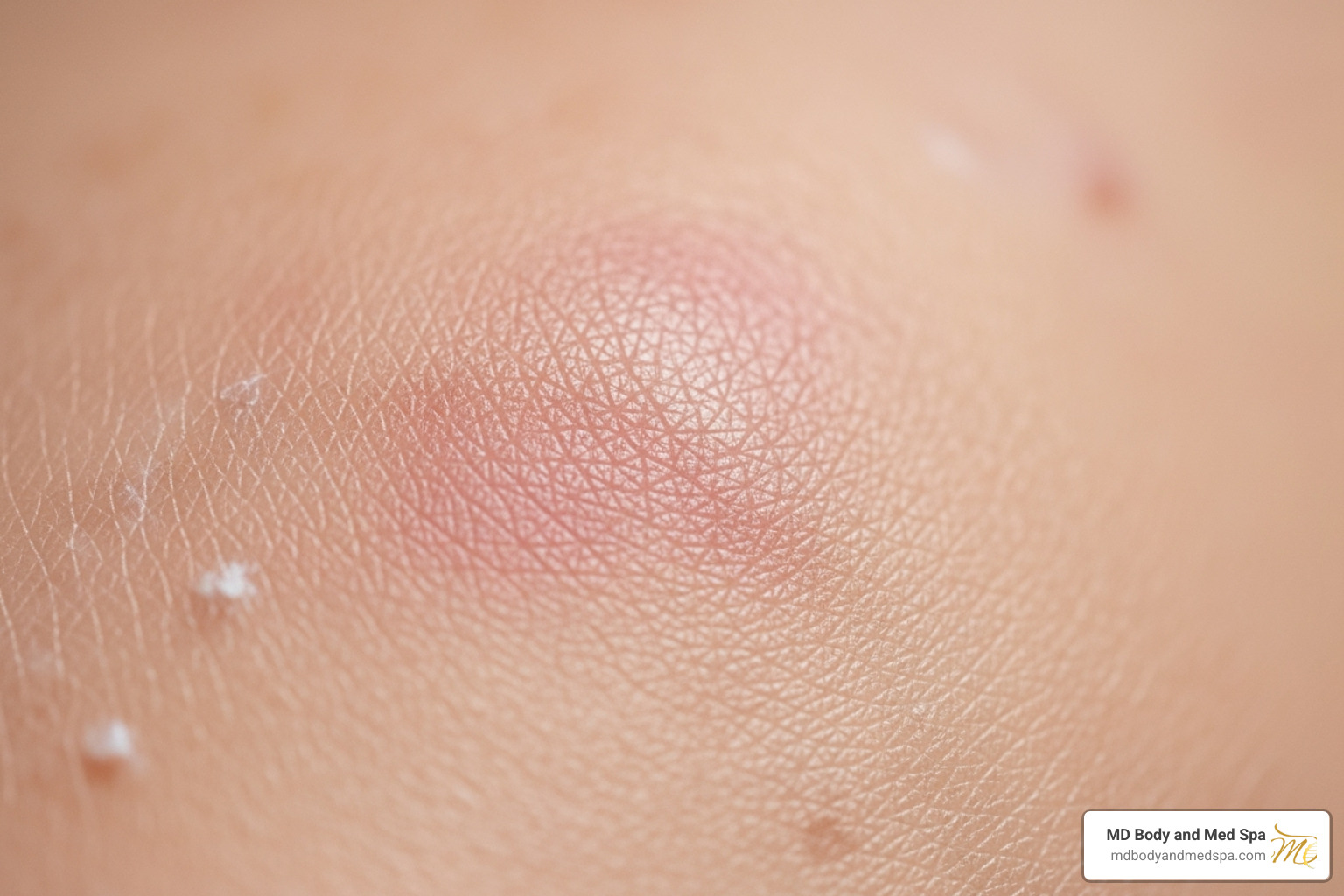
Expect swelling for 24-48 hours, itching or stinging for 12-72 hours, and peeling around day five to seven. Redness is also normal and can persist for weeks or even months.
The healing duration varies by treatment: CO2 laser recovery can take up to two weeks, while Erbium laser recovery is often just one week. Fractional laser recovery is also about a week, though some gentler treatments require only 2-3 days of downtime. For a comparison of recovery timelines, see this Guide to Skin Resurfacing Options.
Essential Post-Treatment Care for Optimal Results
Proper post-treatment care is crucial for achieving beautiful results. Follow these key steps:
- Cleanse the treated area 4-5 times daily with a recommended gentle cleanser.
- Apply ointment like petroleum jelly or Aquaphor immediately after cleansing to keep skin moist and prevent scabs.
- Use cool compresses for the first 48 hours to manage swelling.
- Sleep with your head liftd on an extra pillow for the first four days.
- Use broad-spectrum SPF 30+ sunscreen daily once the skin has healed. This is non-negotiable.
- Avoid harsh products like retinoids or glycolic acid for at least six weeks.
- Choose oil-free makeup for the first few months once you resume wearing it.
- Moisturize consistently to maintain results and comfort.
For more on maintaining healthy skin, explore our insights on More info about Medical Grade Skincare.
Important Considerations Before You Commit
Choosing skin resurfacing is a significant decision. At MD Body and Med Spa, we believe in complete transparency regarding candidacy, potential risks, and the investment involved. Understanding these factors ensures you'll be thrilled with your decision.
Who is a Good Candidate for Skin Resurfacing?
Determining if you are a good candidate is a key part of the consultation process. Safety and realistic outcomes are our priorities.
You are likely a good candidate if you:
- Have fine lines, shallow acne scars, sun spots, or uneven skin texture.
- Are a non-smoker in generally good health.
- Have realistic expectations about the results.
Skin resurfacing may not be suitable if you:
- Have active acne.
- Have very dark skin tones (requires extra caution due to pigmentation risks).
- Have used isotretinoin (Accutane) within the past year.
- Have an autoimmune disease or a condition that impairs healing.
- Are pregnant or breastfeeding.
Even if traditional resurfacing isn't right for you, we can often recommend effective alternative treatments.
Potential Risks and Side Effects
While serious complications are rare with an experienced provider, every medical procedure has risks. It's important to be aware of them.
Common and temporary side effects include:
- Redness and swelling lasting for weeks or months.
- Itching, crusting, and peeling during the first week.
- Milia (small white bumps) or temporary acne flare-ups.
- Cold sore outbreaks in those with a history (preventive medication is prescribed).
More significant risks include:
- Pigmentation changes: Hyperpigmentation (darkening) or hypopigmentation (lightening) of the skin.
- Infection and scarring: Rare when proper aftercare is followed.
- Ectropion: A very rare condition where the lower eyelid rolls outward.
Choosing an experienced provider who customizes laser settings and provides comprehensive aftercare significantly reduces these risks.
Understanding the Cost of Skin Resurfacing
Skin resurfacing is an investment in your confidence. Costs vary based on treatment type, area size, and provider expertise.
Ablative treatments are typically more expensive than non-ablative options. According to recent data, ablative laser resurfacing averages around $2,509, while non-ablative treatments average about $1,445. Your final cost will depend on the treatment area size and the number of sessions required.
Provider experience is a factor in pricing, as you are investing in expertise, safety, and advanced technology. For our clients in Greenwood Village, Cherry Hills Village, Denver, Littleton, and Highlands Ranch, we offer competitive pricing for high-quality service.
Insurance generally does not cover cosmetic procedures. However, some plans may offer partial coverage for treating medical conditions like precancerous growths. We recommend checking with your provider directly. To make treatments accessible, MD Body and Med Spa offers flexible payment options.
Frequently Asked Questions about Skin Resurfacing
Here are answers to some of the most common questions we receive about skin resurfacing.
How many treatments will I need?
The number of treatments depends on the procedure type and your goals.
- Ablative treatments like deep CO2 laser resurfacing often deliver dramatic results in a single session.
- Non-ablative and fractional treatments are gentler and typically require a series of 2 to 4 treatments spaced several weeks apart to achieve optimal results. For example, a CO2 Microlaser Peel may require 3 treatments.
Maintenance treatments every few years can help preserve your results as your skin continues to age.
Is skin resurfacing painful?
We prioritize your comfort. During the procedure, we use topical anesthetic cream, local anesthesia, or oral medication to minimize pain. Most patients report feeling only warmth or pressure.
After the procedure, the sensation is often compared to a moderate sunburn, which may last for a few hours to a few days. Itching or stinging is also common for the first 12 to 72 hours. We provide detailed instructions on using cool compresses and over-the-counter pain relievers to manage any discomfort during the healing process.
How long do the results last?
The results from skin resurfacing are long-lasting, with improvements visible for 5 to 10 years or even longer, particularly with ablative treatments.
However, the treatment does not stop the natural aging process. To maximize the longevity of your results, strict sun protection is essential. Daily use of a broad-spectrum SPF 30+ sunscreen and a high-quality, medical-grade skincare routine will help protect your investment.
While some improvements are immediate, the full effects of new collagen growth can take several months to develop, with many patients seeing continued improvement for up to a year.
Achieve a Flawless Complexion
Your journey to radiant, youthful skin is within reach. Skin resurfacing offers a proven path to renewed confidence by effectively treating acne scars, fine lines, sun damage, and uneven texture in a single comprehensive treatment.
At MD Body and Med Spa, we understand that every person's skin is unique. We create personalized treatment plans that combine cutting-edge technology with genuine care to match your specific goals and lifestyle. Our clients consistently report a significant boost in confidence after seeing their smoother, more even-toned skin.
Located in Greenwood Village, we proudly serve the surrounding communities, including Cherry Hills Village, Denver, Littleton, and Highlands Ranch. We believe everyone deserves to feel great in their skin, which is why we offer flexible payment options to make your aesthetic goals achievable.
Ready to find what skin resurfacing can do for you? The first step is a no-pressure consultation with our experts to assess your skin and answer your questions.
Explore our Skin Rejuvenation services to learn more about how we can help you achieve the flawless complexion you deserve.
